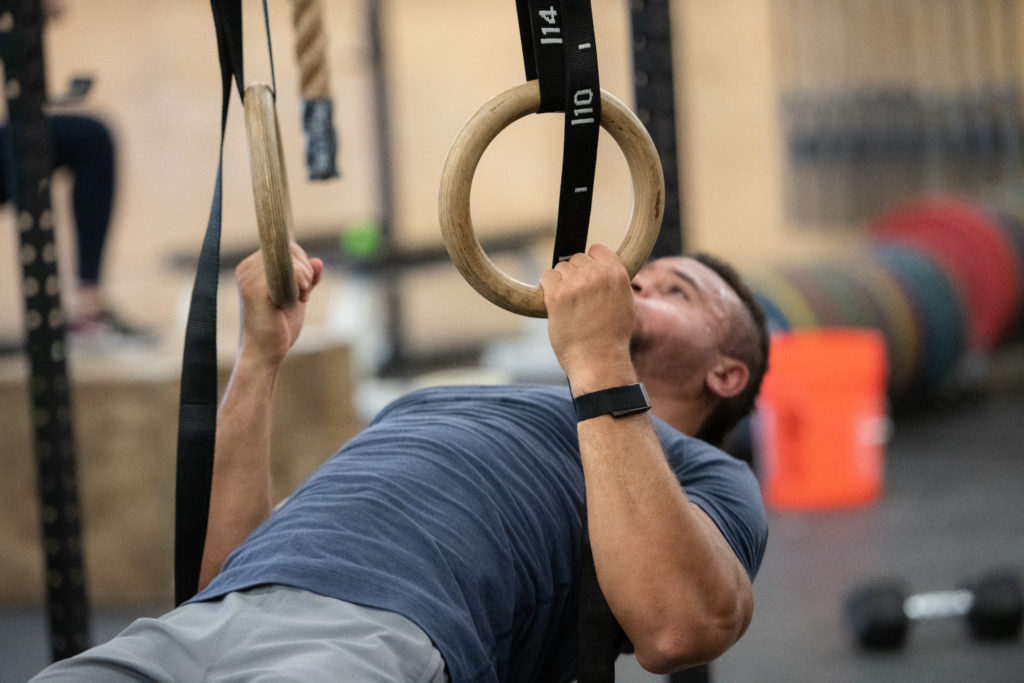
The Case for Ring Rows
Written by Aush Chatman
If you look up progression in the dictionary you will see that progression is the process of developing or moving gradually towards a more advanced state, or a succession, a series.
When it comes to exercise progression, the rules get a little more gray because of how nuanced and complex humans are. Let me offer a working definition that will help us categorize exercises into nice progression chains. A basic movement is only the progression of a more advanced movement, if the more advanced movement cannot be readily achieved without mastery of that more basic movement.
Example: I cannot perform a strict muscle-up until I possess the skill and strength for a strict pull-up.
So the pull-up is a progression for a muscle-up.
Conversely I can get you a strict pull-up without you ever performing a single ring row. So the ring row is NOT in the progression for pull-ups, although I would call it an accessory movement to the pull-up.
But the point of this isn’t to belabor that point. While I do think it is valuable to understand which movements are actually in the progression for more advanced skills you would like to develop so you can prioritize and make your time in the gym more efficient; I am not here to come down on anyone who may have thought or still does think ring rows are a progression for pull-up.
So what’s my point?
Good question! My point is understanding that the ring row is not in the progression for pull-ups allows us to take a step back and look at ring rows in a new light. Instead of them being the exercise we prescribe as a substitute for pull-ups, we can now see it as a worthy movement on its own. Again there is nothing wrong with that substitution, it makes sense, they are both pulling movements and because your feet stay on the ground, the ring row is much more accessible. So as far as subs go, it is completely viable.
Why Ring Rows?
As an entity to itself though, the ring row has immense value that I believe is untapped.
Ring Rows are Easily Learned
First the complexity of the movement is LOW. Most folks can be coming from fresh off the couch and on the rings doing a ring row in less than a minute of instruction. However, there is more than meets the eye with the ring row.
Many Types of Ring Rows
Second, we have to remember that we tend to do all of our ring rows with one style. Feet on the ground hammer grip style. This harkens back to why we feel like ring rows are MUCH easier than pull-ups, namely because they are, because we always do them in their “easiest” form. Feet on the ground ring row are parallel to feet on the ground pull-ups. Have you tried feet elevated? Try 10 reps of feet-elevated ring row and compare that to 10 reps of strict pull-ups, a lot closer in difficulty.
Ring Rows Build Strength
Third, the ring row is a horizontal bodyweight pulling exercise. Phenomenal for upper back strength AND for strength through ranges of motion for the shoulder blades (through protraction and retraction).
Fourth, and my last point of praise for the ring row, along with a ring support hold it is a great introductory exercise to the rings. If you’d like to work on false grip strength but don’t have a strict pull-up yet, SUB in some false grip ring rows!
Giving the Ring Row it’s Due
So my friends, grab a set of rings and get after some horizontal pulling strength. Remember if your goal is a strict pull-up, the ring row is not on the path necessarily. BUT! Let’s all give the ring row it’s due, not only has it saved many of us when an inordinate number of pull-ups were prescribed, but it is also a fantastic movement that we should explore the benefits of A LOT more than we do!